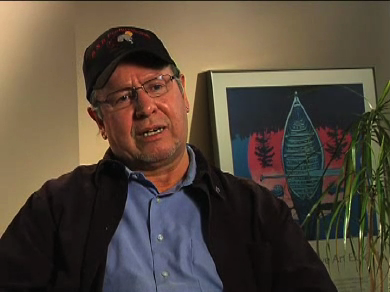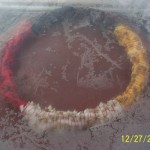Pike Island
Pike Island is central to Dakota history. It is located at the bdote (convergence) of the Mississippi and the Minnesota Rivers and is, therefore, a very sacred place. For some Dakota people, Pike Island is considered the starting point, the very spot of genesis for Dakota people.
Pike Island is also the site of the beginning of the theft of Dakota lands. The name it is known by today refers to Zebulon Pike, who came here in 1805. Meeting with a few Dakota people here, he purchased 100,000 acres of land on which to build a fort (now known as Fort Snelling), an area that now includes much of the Twin Cities. Many aspects of the treaty have remained controversial since the day it was signed, including how much the U.S. would pay for the land, when it would pay, what the boundaries of the land were, and even whether the treaty is official.
Most Dakota people have strong feelings about traditional Dakota sites in the Minneapolis-St. Paul area. And many Dakota who have been cut off from their own history are regaining knowledge about their culture. Among all Dakota people, Pike Island is one of the most important spots in history.
- “Pike” Treaty of 1805 On what is now called Pike’s Island in the Mississippi River, a traditional meeting place for Dakota people and part of the site of Bdewakantuwan Dakota genesis stories, Captain Zebulon Pike negotiated the purchase of several hundred acres on which to build a fort.
- The “Pike” Treaty of 1805 is a flashpoint in the history of Minnesota, the first instance in which the US government negotiated for land within the State’s current boundaries. For such an important document, however, the history of this treaty is surrounded by a startling amount of ambiguity and misinformation.
- The boundaries of the land cession were never specified. Nobody knows exactly which 100,000 acres US was buying from the Dakota.
- Only 2 of the 7 Dakota leaders present for the negotiations signed the treaty, calling into question the validity of the treaty from a Dakota point of view.
- The President never “proclaimed” the treaty (a step necessary to make the treaty official), calling into question the validity of the treaty from a government point of view.
- The purchase price is a mystery. At the time of the treaty, Pike mentioned in his journal that the land was worth $200,000, but an amount was not listed in the treaty. The U.S. Senate arbitrarily set an amount of $2,000 without consulting the Dakota. Even this amount was not paid until decades later, long after the fort was built. During negotiations, Pike passed out gifts and whiskey to the Dakota. In an incredible insult to Dakota people, this has been reported time and again as the actual payment for the land. “Reputable” sources such as MPR, the Minnesota Almanac Book of Days, and offical State websites repeat the ridiculous notion that the Dakota traded 100,000 acres of land for “trinkets and whiskey.” Prepared by Martin W. Case, Director of Allies Research and Writing/The Indian Treaty Signers Project














